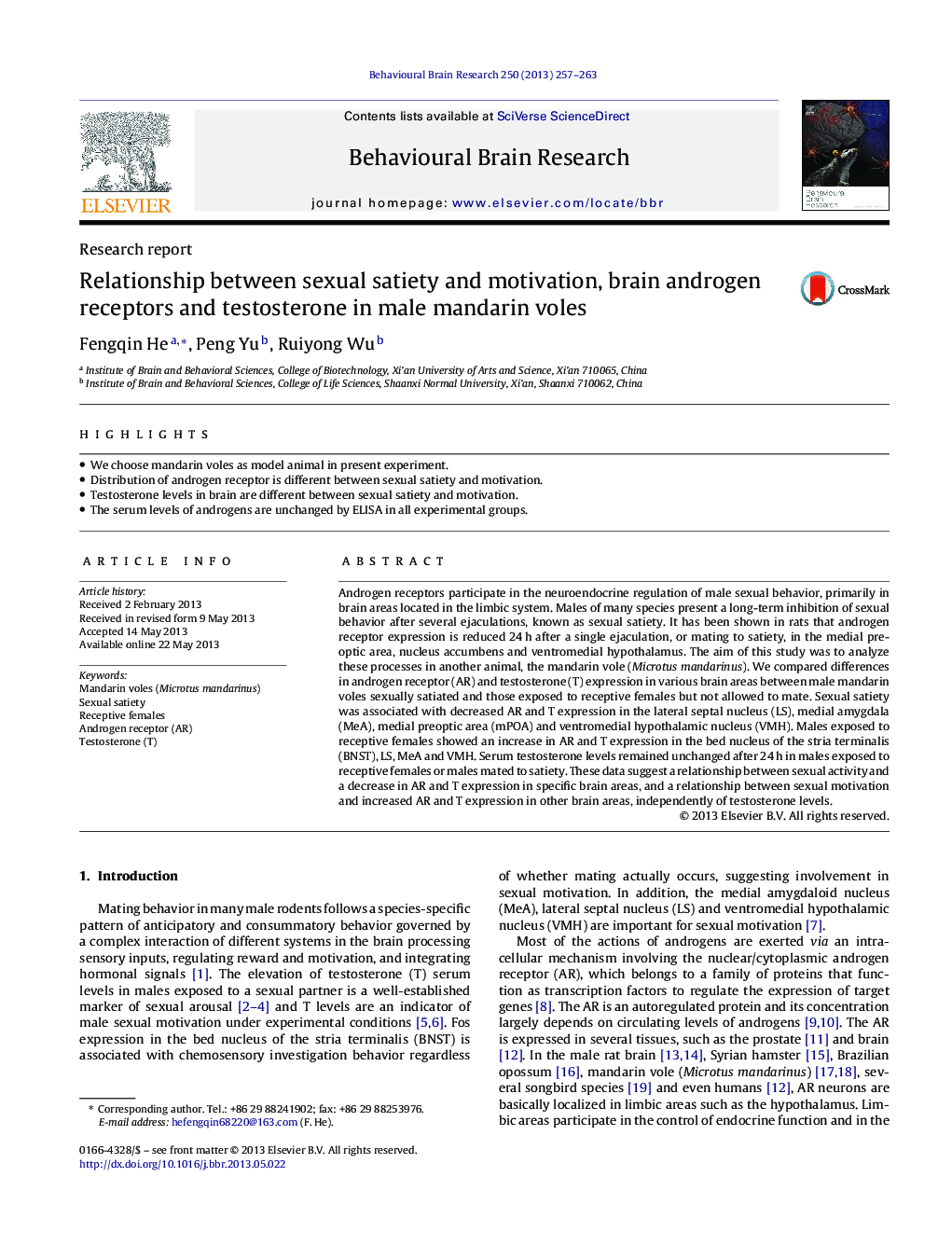| کد مقاله | کد نشریه | سال انتشار | مقاله انگلیسی | نسخه تمام متن |
|---|---|---|---|---|
| 6259005 | 1612982 | 2013 | 7 صفحه PDF | دانلود رایگان |
- We choose mandarin voles as model animal in present experiment.
- Distribution of androgen receptor is different between sexual satiety and motivation.
- Testosterone levels in brain are different between sexual satiety and motivation.
- The serum levels of androgens are unchanged by ELISA in all experimental groups.
Androgen receptors participate in the neuroendocrine regulation of male sexual behavior, primarily in brain areas located in the limbic system. Males of many species present a long-term inhibition of sexual behavior after several ejaculations, known as sexual satiety. It has been shown in rats that androgen receptor expression is reduced 24Â h after a single ejaculation, or mating to satiety, in the medial preoptic area, nucleus accumbens and ventromedial hypothalamus. The aim of this study was to analyze these processes in another animal, the mandarin vole (Microtus mandarinus). We compared differences in androgen receptor (AR) and testosterone (T) expression in various brain areas between male mandarin voles sexually satiated and those exposed to receptive females but not allowed to mate. Sexual satiety was associated with decreased AR and T expression in the lateral septal nucleus (LS), medial amygdala (MeA), medial preoptic area (mPOA) and ventromedial hypothalamic nucleus (VMH). Males exposed to receptive females showed an increase in AR and T expression in the bed nucleus of the stria terminalis (BNST), LS, MeA and VMH. Serum testosterone levels remained unchanged after 24Â h in males exposed to receptive females or males mated to satiety. These data suggest a relationship between sexual activity and a decrease in AR and T expression in specific brain areas, and a relationship between sexual motivation and increased AR and T expression in other brain areas, independently of testosterone levels.
Journal: Behavioural Brain Research - Volume 250, 1 August 2013, Pages 257-263
